Make the best use of Scientific Research and information from our 700+ peer reviewed, Open Access Journals that operates with the help of 50,000+ Editorial Board Members and esteemed reviewers and 1000+ Scientific associations in Medical, Clinical, Pharmaceutical, Engineering, Technology and Management Fields.
Meet Inspiring Speakers and Experts at our 3000+ Global Conferenceseries Events with over 600+ Conferences, 1200+ Symposiums and 1200+ Workshops on Medical, Pharma, Engineering, Science, Technology and Business
Research Article Open Access
So-Called Idiopathic Scoliosis: Diagnostic Tests: Examples of Children Incorrect Treated: New Therapy by Stretching Exercises and Results
| Jacek Karski1 and Tomasz Karski2* | |
| 1Paediatric Orthopaedic and Rehabilitation Department of Medical University in Lublin, Poland | |
| 2Former Head of Paediatric Orthopaedics and Rehabilitation Department of Medical University in Lublin, Poland | |
| Corresponding Author : | Tomasz Karski Former Head of Paediatric Orthopaedics and Rehabilitation Department of Medical University in Lublin, Poland E-mail: t.karski@neostrada.pl/tmkarski@gmail.com |
| Received February 04, 2013; Accepted April 15, 2013; Published April 17, 2013 | |
| Citation: Karski J, Karski T (2013) So-Called Idiopathic Scoliosis: Diagnostic Tests: Examples of Children Incorrect Treated: New Therapy by Stretching Exercises and Results. J Nov Physiother 3:147. doi: 10.4172/2165-7025.1000147 | |
| Copyright: © 2013 Karski J, et al. This is an open-access article distributed under the terms of the Creative Commons Attribution License, which permits unrestricted use, distribution, and reproduction in any medium, provided the original author and source are credited. | |
Visit for more related articles at Journal of Novel Physiotherapies
Abstract
In first article the author (T. Karski) described the biomechanical causes of development of the so-called idiopathic scoliosis. It this article is given basic information for new screening for scoliosis, and for new proper conservative therapy. We are given also examples of “wrong, incorrect therapy in the past”. The article underlined necessity of causal prophylaxis.
| Keywords |
| So-called idiopathic scoliosis; Incorrect extension exercises; New stretching exercises |
| Introduction |
| However we are speaking for 18 years about new, very effective stretching exercises in scoliosis, in literature mostly are given articles about surgery [1-7]. |
| New therapy by exercises is based on “biomechanical aetiology” of the so-called idiopathic scoliosis. Our research over years 1985- 2012 shows exactly, that the causes of the aetiology of scoliosis is not weakness of muscles but the shortening of soft tissue in the region of right hip influences “gait” and “standing at ease”. This “shortening” of tendons, fascias, muscles has a pathological influence in the period of growth of the child. The changes cause that “the physiological growth” of the pelvis and the spine develops into “the pathological roles” resulting-so-called idiopathic scoliosis. The children endangered with scoliosis need not strengthen, or extensions exercises but they should stretching exercises to cure the “shortened tissues” of the right hip and of the whole spine, especially in the concave side of the curves. The origin of the “shortenings” and even of the “contracture”– which need very early therapy-comes from the “Seven Contracture Syndrome” [8-19]. In this “Seven Contracture Syndrome” there are many “deformities”, and “disturbed functions of joints” sometimes distant from the spine which is presented below. |
| Material├ó┬?┬?The Study of Children With So-Called Idiopathic Scoliosis |
| The complete material consisted in 2012 of a large group of children and adults with scoliosis (N=1950). There patients were divided in two groups: 1/the patients not treated primarily, it means before the first examination by orthopaedic surgeons (both authors)-ca. 30 %, 2/the patients treated by old, harmful exercises–ca. 70 % of patients. |
| New Tests for Scoliosis |
| In the diagnosis of scoliosis we should use widely known old tests (Adams & Meyer test), symmetry or asymmetry of waist, but also new tests like-“side bending test for scoliosis”, checking the habit of standing ‘at ease’–right versus left leg, Dunkan Elly-test (or Thom test or Staheli test), pelvis rotation test [20-28], “adduction of hips test– similar to Ober test” and others, presented below in details (Figures 1-9). |
| Independent of above mentioned tests, there is full list of the tests and clinical sings for early discovery of scoliosis: |
| 1 Test of adduction of both hips (in extension position of joints– like Ober test). It is checking of limited adduction of the right hip, plus often additionally flexion contracture of hips/right hip (Duncan Ely-Test, or Staheli test or Thom test), checking often on additionally external rotation contracture of the right hip. |
| 2 Looking at shape of the spine (of the body) in flexion test. Explanation: round shape-good, stiff and straight “line of spine”-the beginning of scoliosis. |
| 3 “Bending test for scoliosis”-Adams/Meyer test. |
| 4 “Side bending test for scoliosis”-Karski/Lublin test, it is modified “Adams/Meyer test”. This side bending test for scoliosis is more precise-because it increases the sensitivity and specificity of the tests [29-37]. |
| 5 Rotation movements of the body test-comparison of the left and right rotation movement of the pelvis and shoulders (whole body) in “standing straight position” of the child with feet close together [38-49]. |
| 6 “Permanent standing at ease” test-on the right /on the left leg. Influenced is “cumulative time” of the standing ‘at ease’ on the right leg. Standing on the left leg is safe for the spine, because is not permanent. Standing on the right leg is permanent. |
| 7 The symmetry or asymmetry of the waist test (old observation, but very important)-the waist is deeper on the left upper part of the thorax, typical for I epg “S” double scoliosis-with stiffness of spine and with gibbous costalis [other name of “S” deformity in I epg: “lordoscoliosis”], deeper waist on the right lower part- typical for II/A “C” scoliosis and for II/B “S” double scoliosis (thoracic secondary). In the group II/B “S” the spine deformity is without stiffness and without gibbous costalis or minimal and “round” and never stiff. Other name of “S” deformity in II/B epg is: “ky(i)phoscoliosis”. |
| 8 Illnesses (e.g. rickets). |
| 9 Anatomical anomalies of the spine (spina biffida occulta, pectus infundibuliforme). If present–the proper development of the spine is endangered |
| 10 Body build type-asthenic and picnic (bad), athletic (good). |
| 11 Willingness /intention to participate in sports, if yes-good, if no-bad. |
| Old, Harmful Rehabilitation Exercises in Therapy of Scoliosis. Examples of Pitfalls |
| All old (from the XX century) exercises were based on the conviction that scoliosis is a result of “weakness of muscles”. Because of this, in the past the “strengthened” exercises were very popular and were admitted in many countries. There were as follow: |
| a) all exercises in prone position (on stomach) on mattress, |
| b) exercises in laying on the rehabilitation table in prone position and lifting up of the trunk,B |
| c) all other strengthening exercises, presented in figures 10-13. |
| This old therapy was completely incorrect and wrong. Also so-called “correcting exercises” performed in Polish schools and kindergartens were and still are mostly wrong. |
| In patients coming to our Department in years 1985–2009 (till 2009 Prof. Karski was the Head of the Department) after such wrong therapy only a huge deformity with big asymmetries of trunk was observed, accompanied by a big hump and totally stiff spine (Figures 14-18). To explain to parents the bad results of therapy–the doctors introduced the term “the natural history of scoliosis”. |
| In past, in the treatment and prognosis of results, the special value was putting on “Risser test”. Why–the results were only bad, the worsening of scoliosis was special big in acceleration period of growth–so was important to known which period of growth is before child. To answer for such question, doctors looked to “riser test” and observe Cobb angle of curves [50-54]. |
| New Rehabilitations Exercises |
| Proper solution for the “scoliosis problem” is an early prophylactics based on “new exercises” taking into consideration the “biomechanical aetiology”. The new rehabilitation exercises should remove the contracture in the region of pelvis, of the hips and in the whole spine. The flexion-rotation exercises should be performed already at very small children in age of 3-4. It was /is also important to change the position of standing, seating and sleeping (Figures 19-24). |
| Principles of the new rehabilitation exercises and examples of good results: |
| a. removal of the contracture of the right hip, |
| b removal of the flexion contracture of the right hip /both hips, |
| c removal of the contracture on concave side of the both curves– on the left convex lumbar curve and on right convex thoracic curve, |
| d removal of the extension contracture-“stiffness” of the spine in the thoracic part or in the whole spine (lumbar and thoracic), |
| eactive participation in sports at school and at home every day. Especially are beneficial Kung fu, taekwondo, karate, aikido, tai chi, yoga (Figures 25-27). |
| f sitting position at school and at home–relaxed, never straight u |
| g sleeping during the first ten years of life (also later) on the side, in “foetal position” with fully flex spine, |
| h “standing” on both legs which is with no influence on the spine, “standing at ease” on the left leg–beneficial influence on the spine (protects against scoliosis). Also “the standing” in the position “uchi hachi ji dachi” or “kiba dachi” (terms taken from Karate) is safe for the spine. |
| i. corset-model according to Cheneau or “Lublin model” is used mostly for children from the I epg group.–(“S” double scoliosis with stiff spine), or for II/B epg group (“S” double scoliosis with flexible spine). In our study 15%-20% of children used the corset. |
| j. In some children from II/A and II/B epg group of scoliosis we advise the usage of inserts for left shoes 1 cm or 1.5 cm, sometimes 2 cm (necessary clinical examination). |
| k. After 1-2 years of proper exercises we see the good results. When the child was primary treated by incorrect, harmful exercises the child must make proper exercises for good result longer time (Figures 28-31). |
| Discussion |
| In so-called idiopathic scoliosis it is necessary to introduced to Clinic, to orthopaedics and rehabilitation as well to physiotherapy the new method of examination, its mean new tests for discovery of spine deformities. Such examination should be started in age of 3- 4 years because development of scoliosis start when the child start to stand and start to walk. In new therapy by exercises, should be used the stretching exercises to remove the contractures in region of pelvis and hips as well in concave side of curves. |
| The children with oncoming scoliosis should take part in extensive sport and the best is karate, taekwondo, aikido and others similarly Far East sport arts. |
| Conclusions |
| 1. In the rehabilitation therapy of the so-called idiopathic scoliosis-the treatment in every case should be planned in connection to the biomechanical aetiology and the aim of therapy should be “the removal of contractures” |
| 2. Before treatment, every child should undergo the “new screening” |
| a. should be examined to discover the difference of adduction movement of the hips, |
| b in Adams test (bending test for scoliosis) or in Lublin test (side bending test for scoliosis) should be estimated the shape of spine, whether or not the curves are present, |
| c every child should be examined to estimate “the position of pelvis”, |
| d every child should be checked for “the habit of standing ‘at ease’ on left /versus right leg”. |
| 3. In treatment and in prophylaxis only are the proper stretching exercises. |
| 4. All at-risk children should be included in an early program of “prophylactics”: |
| a sit physiologically (relax), never straight up; |
| b sleep in foetal position and |
| c stand “at ease” on the left leg or on both legs. |
| 5. Early prophylactic programmes should also include such sports like: karate, kung fu, taekwoon do, tai chi, aikido, yoga etc. |
| 6. Neo-prophylaxis is possible and very effective-but it should be started very early, in small children in kindergartens and in the first years (1 to 6 grade) of primary school. |
| Acknowledgement |
| Many thanks for correcting of English to Claudia Ramirez from USA, student in Medical University in Lublin. |
References |
|
Figures at a glance
 |
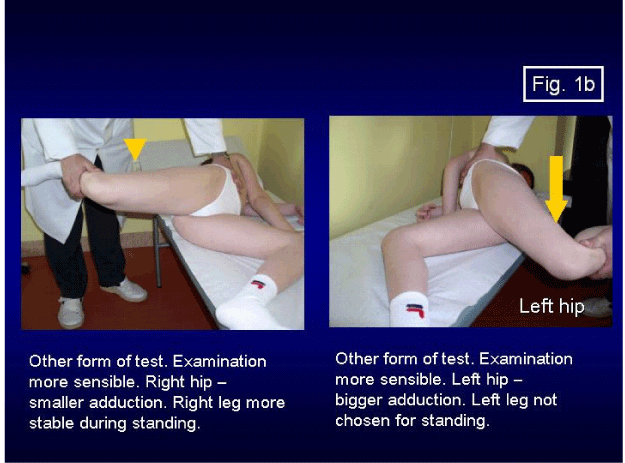 |
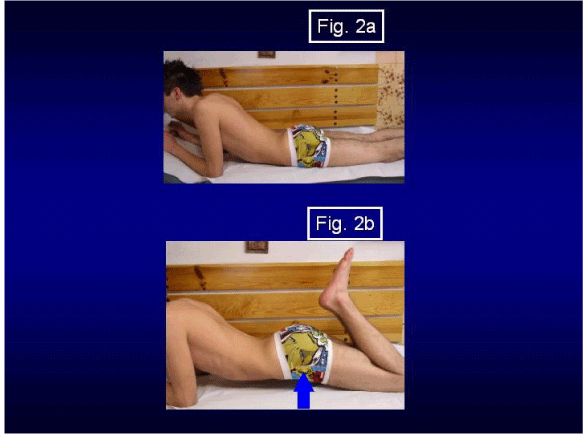 |
 |
 |
| Figure 1a | Figure 1b | Figure 2 | Figure 3 | Figure 4 |
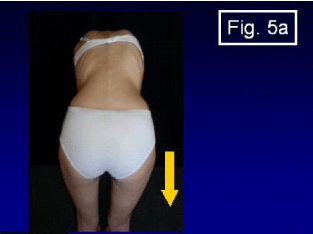 |
 |
 |
 |
 |
| Figure 5a | Figure 5b | Figure 5c | Figure 6 | Figure 7 |
 |
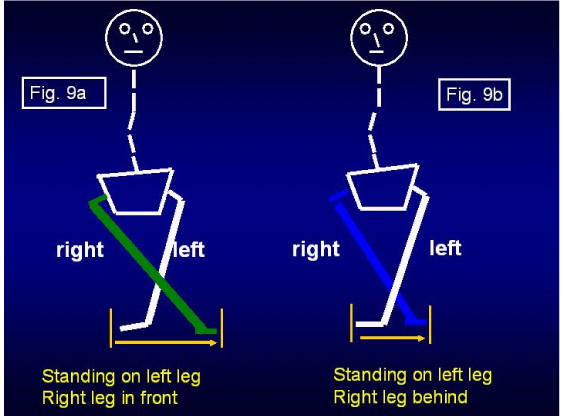 |
 |
 |
 |
| Figure 8 | Figure 9 | Figure 10 | Figure 11 | Figure 12 |
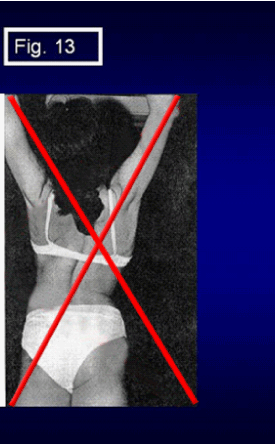 |
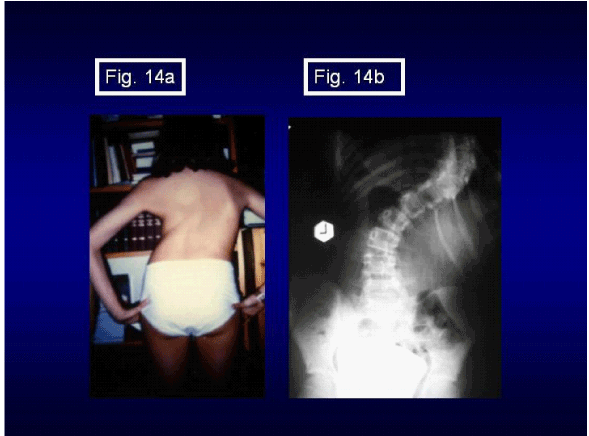 |
 |
 |
 |
| Figure 13 | Figure 14 | Figure 15 | Figure 16 | Figure 17 |
 |
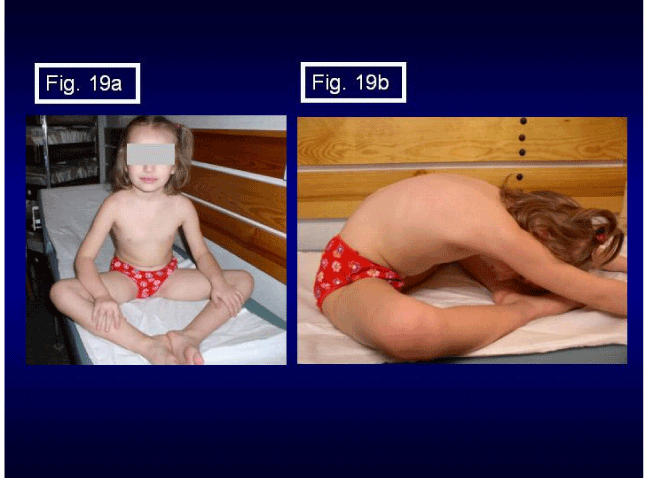 |
 |
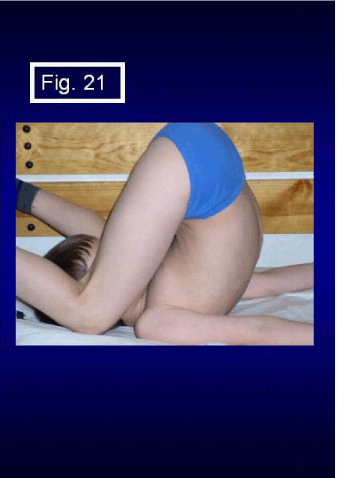 |
 |
| Figure 18 | Figure 19 | Figure 20 | Figure 21 | Figure 22 |
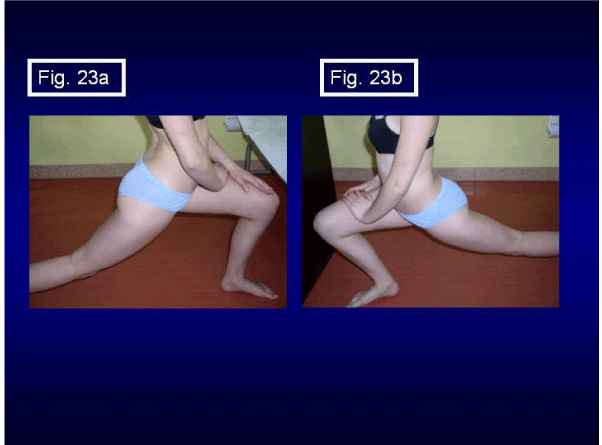 |
 |
 |
 |
 |
| Figure 23 | Figure 24 | Figure 25 | Figure 26 | Figure 27 |
 |
 |
 |
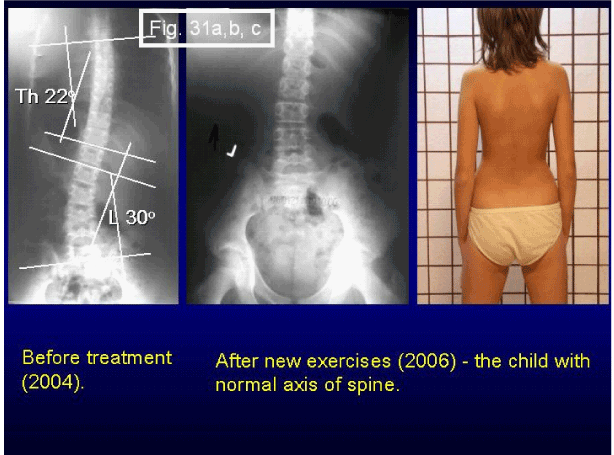 |
| Figure 28 | Figure 29 | Figure 30 | Figure 31 |
Post your comment
Relevant Topics
- Electrical stimulation
- High Intensity Exercise
- Muscle Movements
- Musculoskeletal Physical Therapy
- Musculoskeletal Physiotherapy
- Neurophysiotherapy
- Neuroplasticity
- Neuropsychiatric drugs
- Physical Activity
- Physical Fitness
- Physical Medicine
- Physical Therapy
- Precision Rehabilitation
- Scapular Mobilization
- Sleep Disorders
- Sports and Physical Activity
- Sports Physical Therapy
Recommended Journals
Article Tools
Article Usage
- Total views: 15120
- [From(publication date):
May-2013 - Apr 02, 2025] - Breakdown by view type
- HTML page views : 10553
- PDF downloads : 4567
